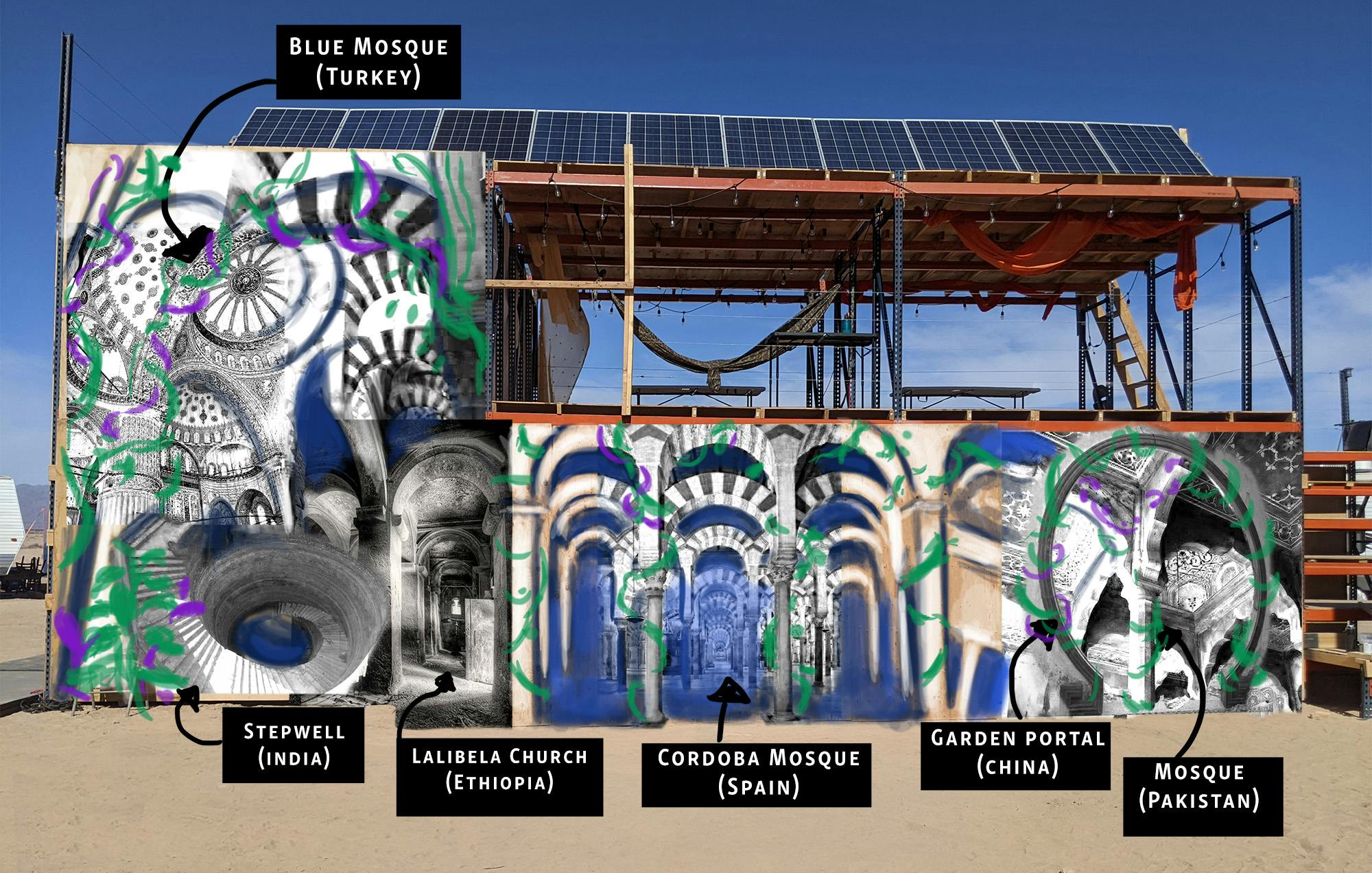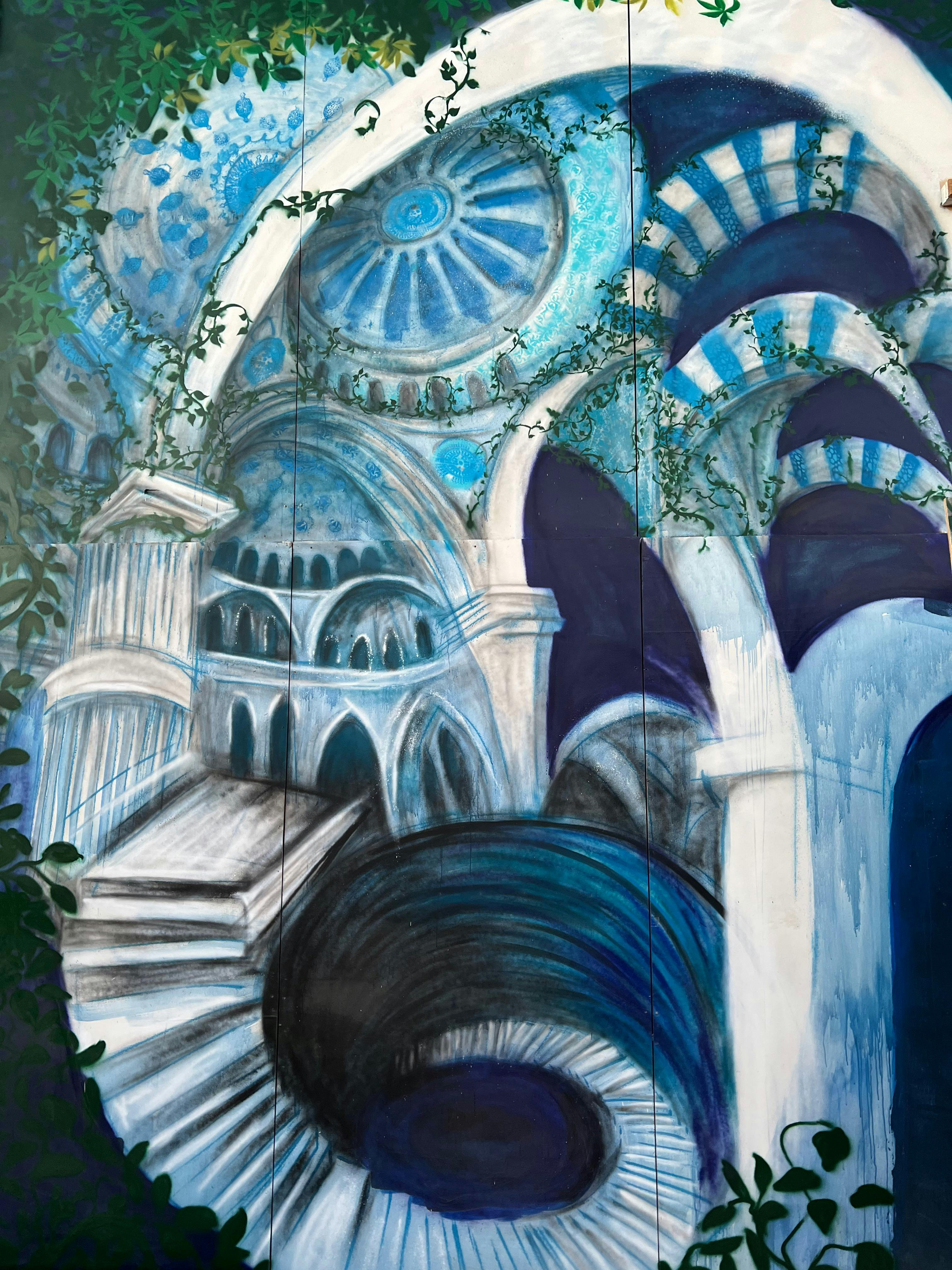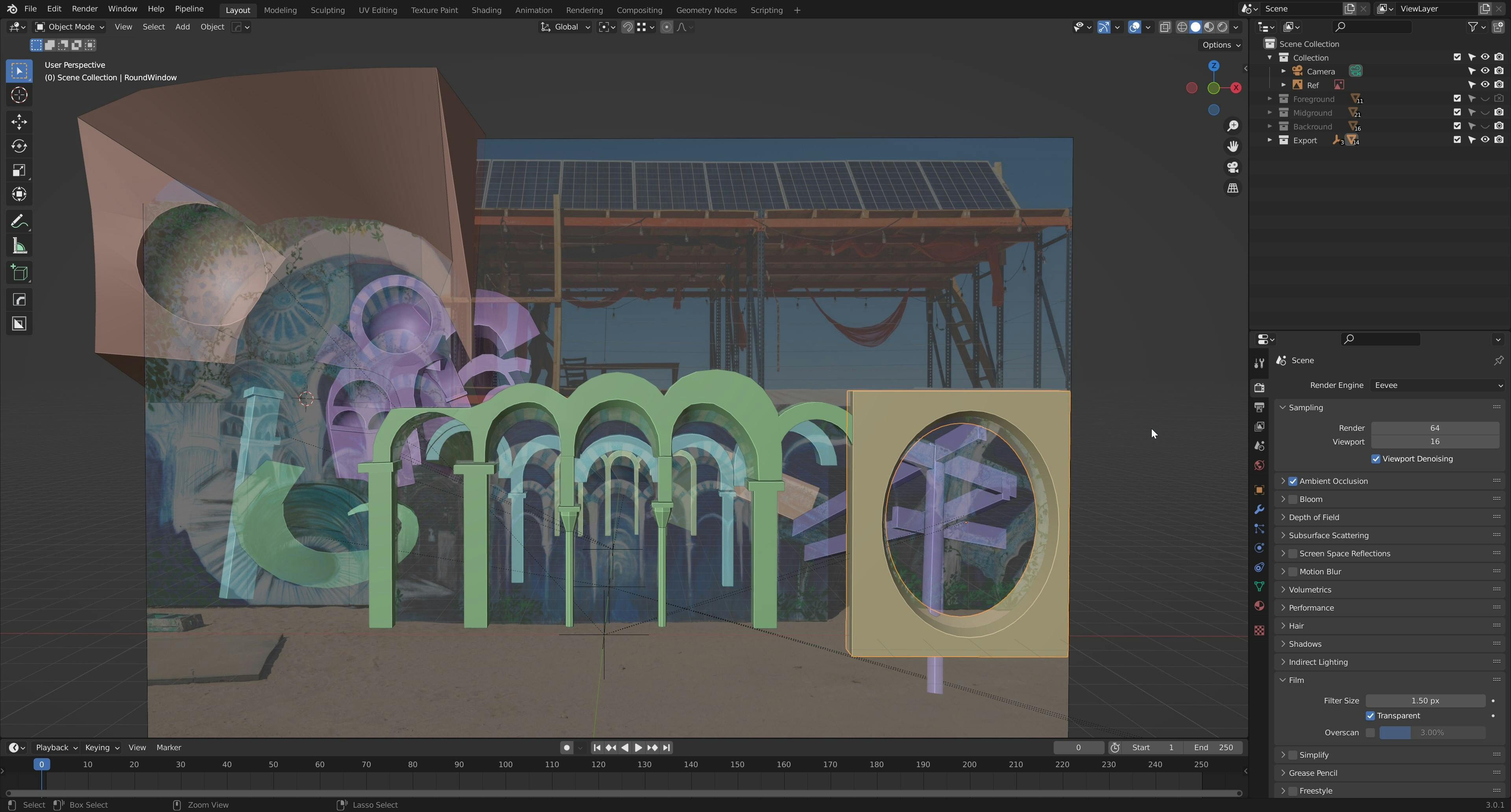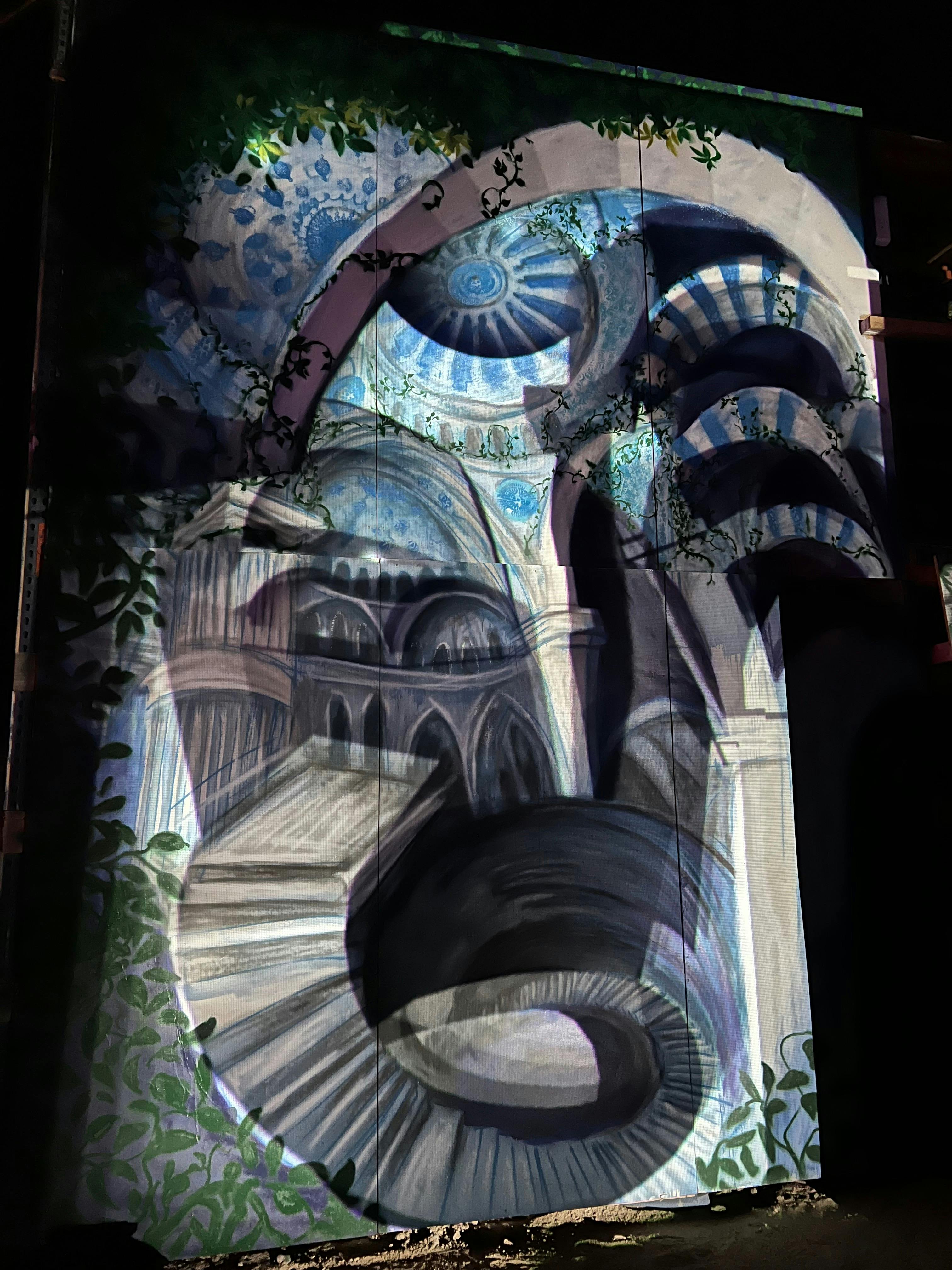I've been interested in combining projection mapping and murals for years. I had the chance of creating installations in cultural centers, galleries and museums with this approach, but it was always too tricky to do so in open space. Happily, Mars College is a perfect space for this! In this year edition, I could give a far better development to a concept I've been ruminating since 2017, when I created a piece with Wenqi Li for Babycastles in NYC. It was then called Infinity Game.
The original concept was a merge of architectural spaces from different cultures with generative art projected on top, made with Processing. The projections would highlight the painting's depth and create animated patterns dancing in the open spaces between the illusionary structures. The patterns and the architecture made allusions to the concept of infinity within different cultures: endless archways, spirals, fractals, many fractals in all sort of shapes.
For Mars College, my task was to paint over the Earth Tribe building. I had the freedom of interpreting Earth's symbols as I wished. I decided to revive the Infinity Game layout, because that particular mix of world temples was so dear to me. Then I painted plants on top of the archways. Man made geometrical spirituality combined with nature's urge for life, spreading untamed.

In the layout one can see all the different references used in this work. Ethiopia (which has been home to a fascinating culture of christian cross fractals), Istanbul's Blue Mosque, Cordoba's mosque, another one from Pakistan, a spiral from one of India's stepwells, a circular portal from some garden in China, patterns from Portugal, China and worldwide mosques. I've been creating murals with architectural optical illusions and patterns for several years (here is another article about this journey!). My interest in patterns came from Portuguese tiles spread all over my hometown, Rio de Janeiro. By studying their history one gets to the Islamic world and eventually to China. That's why my world temple bias is so evident. And because I really love archways.
I deliberately tried my best to do an impossible architecture. If one looks at the archways long enough, one should realize they have a twisted order. Foreground, second ground and background oscillate. Sometimes an archway is in front of another, but by the following column it's behind it. If I'm painting an illusion of perspective, why not enjoy the freedom that light and shadows allows me? It's so simple to change the location of objects in a composition. My human/nature spiritual world does not need to comply with the limitations of our dimension.


Once the painting was completed, our fellow Martian, Vincent Naples, took a very straight photo of it. The image became a reference for Gene Kogan's and Xander Steenbrugge's AI animations on top of it, using Diffusion models. In one of Gene's vision, the mural becomes a porcelain vase, in another it's an organic mass. In Xander's, the archways are portals to another world. We can dive into castles and gardens or once again we find more endless archways.
The photo was also a reference for Kirill Kovalewsky to make a 3d version of the impossible architecture. He made a simplified model, without the fun twisted archways, though with its own character. It was very useful for the projection mapping. We just needed the shapes to align enough to be able to play with light and shadow reaching a whole new level of illusion. Vincent Napples was in charge of the projection mapping creative direction. Using Touch Designer and Kiril's model, we could give depth to the painted architecture. We could make it cast dancing shadows on the projected space. Kiril and Snays created the videos for the projection, playing with textures, colors, patterns, ruins and rebirth. It was such a pleasure to see the mural gain life. I was delighted to see the project grow beyond me, to be surprised at the projections, the quality of my friends work.

One could dance in front of the mural and see a sharp projected shadow on it. Dancing with one's own shadow happens to be a very amusing activity. It makes me want to merge a real dancer, with their shadow, with projected versions of them. Many other installations come to mind as possible references. Such as this work by Tobias Gremmler. I would very much enjoy if we could do a system where any visitor could enjoy such experience, even if we also had prepared performances as well. A phygital mural might be a great theater scenario.

Unfortunately we did not have the time to create a Little Martians projection over this mural. I suspect it would be a great ambience for floating heads to talk to us. They would move behind the archways, coming to the foreground only when talking to the public is needed. Considering the blue background, I'd have to project very light colored Little Martians. We did project Little Martians stories over another wall, though a completely white one. The participants of the Scifi Study group created their own Little Martians animations, many using GPT3 text as a source of inspiration.
But I'll write more about it in the next post!